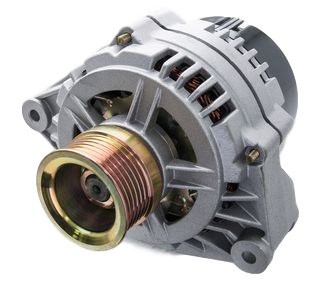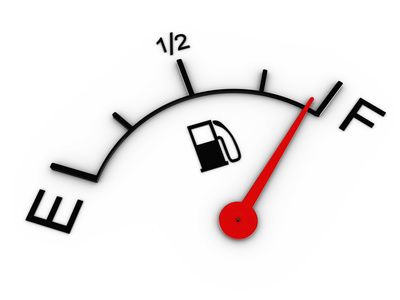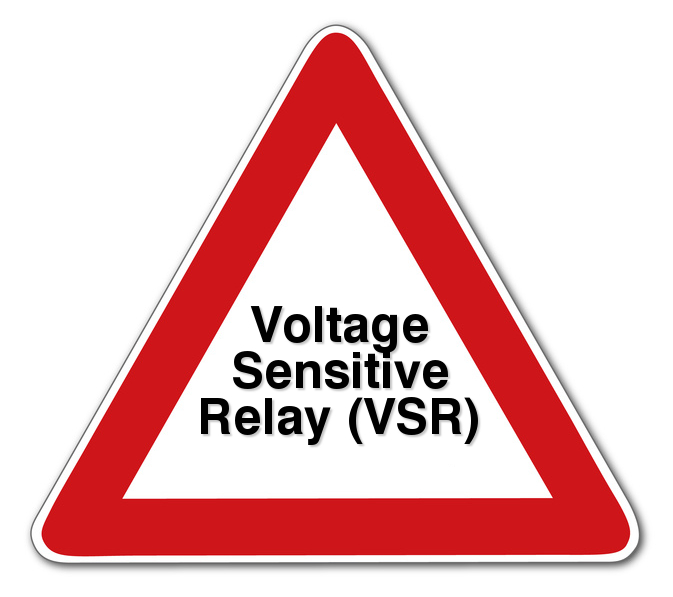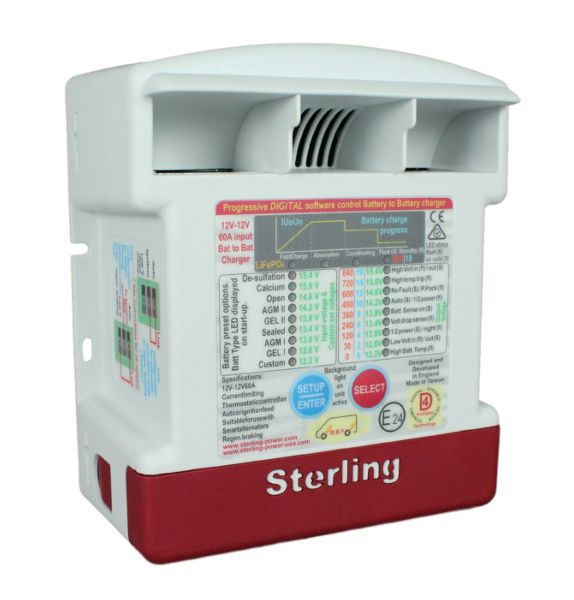Auxiliary Battery Charging In Vehicles With 'Smart' Alternators
 | Vehicle manufacturers are having to comply with increasingly stringent environmental regulations so are continually researching and employing clever technologies to lower fuel consumption and reduce emissions. One of the technologies that has been around for several years, but which is now becoming standard on new vehicles, is the 'smart' or 'intelligent' ECU-controlled alternator. For those of us wanting to charge a second (auxiliary or leisure) battery whilst driving this presents a problem because traditional split charge systems cannot be used. This article explains why and looks at how Battery-To-Battery chargers overcome these issues and the other benefits they have when compared with split charging. |
Note: this issue is not generally applicable to boats as the emissions regulations that apply to vehicles don't apply to leisure craft and so 'smart' alternators on boats are relatively rare.
| For an introduction to battery-battery chargers and VSRs check out our YouTube Video |
What are 'smart' alternators and how do they help with emissions?
Smart alternators are essentially those that have their output voltage controlled externally via the Engine Control Unit (ECU) rather than by an internal voltage regulator as found on traditional alternators.
When an alternator is running and producing a charging voltage the electromagnetic field generated inside it produces a mechanical load on the engine via the alternator drive belt. This load increases as the output voltage rises, meaning that the engine has to work harder to turn the alternator which consumes more fuel in the process. Traditional alternators maintain their voltage between 13.8-14.4V depending on the state of charge of the battery and various other factors. This means that there is always a significant load on the engine from the alternator which requires fuel to be consumed.
 | As smart alternators are ECU-controlled it enables manufacturers to vary the voltage output more than can be achieved with an internal regulator. This provides the opportunity to bring the voltage below 13.8V during periods when no further charging is required (e.g. when the battery is nearly full) meaning that engine loads are reduced, fuel consumption is reduced and emissions are lowered, all helping manufacturers to comply with industry environmental regulations. |
What is regenerative braking?
| Regenerative braking is an energy recovery technology that takes the kinetic energy of the vehicle that is normally converted into wasted heat in the brake pads and discs during braking and instead converts it into electrical energy to re-charge the starter battery. This is made possible because of the use of smart alternators that can be controlled by the ECU when deceleration is detected. During deceleration (for example when taking your foot off the accelerator) the ECU boosts the alternator voltage output as high as 15V+ to create a burst of charge into the battery. This high voltage puts an increased mechanical load on the engine, resulting in increased engine braking, meaning less of the kinetic energy is converted to wasted heat in the pads and discs. So the deceleration of the vehicle is putting charge back into the battery, saving fuel that would otherwise be required to re-charge it. | |
| This charge is then used to power the vehicle's electrical systems when the vehicle is accelerating or travelling at constant speed. During this time the alternator output voltage is reduced (to as low as around 12.5V), which reduces the load on the engine with a consequent reduction in emissions. Regenerative braking is only effective if the starter battery has some spare storage capacity to absorb the charge created by the alternator during deceleration. If the starter battery was fully charged the electrical energy created would be wasted and so the ECU aims to maintain the battery at around 80% state of charge (low enough to have spare storage capacity but high enough to guarantee engine starting if required). | |
Why are these technologies a problem for auxiliary battery charging?
Whilst these new technologies are great news for the environment they cause problems when it comes to charging a second battery in an after-market application for the following reasons:
| An auxiliary battery will not be charging for significant parts of a journey During the periods when the smart alternator output is below the charging voltage threshold there will be no charging taking place. These periods can be significant when combined over the full length of a journey meaning that any connected auxiliary battery will not receive as much charge as it would if connected to a system with a traditional alternator.
| |
 | Gel and AGM batteries can be damaged Gel and AGM batteries (which are now popular for use in auxiliary battery applications) are sensitive to over-charging and voltages above 14.4V can cause gas bubbles to form in the electrolyte gel which can permanently damage the battery.
|
 | Voltage Sensitive Relays cannot be used Voltage sensitive relays rely on voltage thresholds that trigger them to engage and disengage. Typically they engage to connect the starter and auxiliary battery together at around 13.7V and disengage to separate them at around 12.8V, which in vehicles with traditional alternators coincides with engine start-up and shut-down. This is ideal as it makes sure that the auxiliary battery is charging whenever the engine is running. However, with a smart alternator, when the output voltage drops to below 12.8V a VSR would disengage, meaning that the auxiliary battery would have significant periods where it wouldn't be charging, even though the engine would be running (some models of VSR may not engage at all, dependent on the on-board software). VSRs can also engage and disengage frequently with the large and rapid voltage changes from a smart alternator and so the high current contacts may fail prematurely. |
How can I tell if my vehicle has these technologies?
 | Almost all new vehicles will now have smart alternators fitted as standard, and if your vehicle is branded as an eco-efficient model then it is very likely also to have regenerative braking technology. Another indicator is to check the European Emissions Standard to which your vehicles engine complies. If the engine is compliant with the Euro 5 or Euro 6 emissions standards onward then it will almost certainly have a smart alternator. If in doubt you should contact the manufacturer and they should be able to advise. |
So what is a Battery-To-Battery charger and how does it help?
 | If you have a smart alternator then you will need to use a Battery-To-Battery charger (also known as a DC-DC charger) to ensure that you can charge your auxiliary battery effectively. Battery-To-Battery (or DC to DC) chargers take the highly variable voltage output from a smart alternator and boost or reduce it to maintain a stable voltage output according to a multi-stage charging profile (in the same way as a mains charger does) providing a safe, controlled and fast charge for your auxiliary battery. They are easy to install and, just like a VSR, are simply connected between the positive terminals of your starter and auxiliary batteries, together with a negative connection to the vehicle chassis or starter battery-ve terminal. |
| Find out more about our Battery-To-Battery charger range |
Benefits of using a Battery-To-Battery charger for auxiliary battery charging
- Battery-To-Battery chargers are becoming increasingly common in leisure, commercial and marine applications, not only as a way of over-coming the issues with smart alternator technology, but also because they provide several benefits over split charging systems when used with traditional alternators:
- Batteries charge much faster when using a Battery-To-Battery charger when compared with direct alternator charging (as found in split charge systems using VSRs, HD relays or diode isolators). This can typically be around 5x faster.
- A much deeper state of charge can be achieved because the Battery-To-Battery charger uses a multi-stage profile to maximise the depth of charge, something not possible in standard split-charge systems which will typically charge a battery to around 80% of its capacity.
- Charging will always take place when the engine is running, regardless of the alternator output voltage, because low voltages are boosted to meet the required charging profile.
- As in a split charge system, the starter and auxiliary batteries are electrically isolated when the engine is not running to ensure that one cannot discharge the other.
- The charger protects auxiliary batteries from high voltage spikes produced as a result of regenerative braking systems, so preventing damage to sensitive Gel and AGM batteries.
- The current reaching the auxiliary battery is determined by the charger rating (rather than by the maximum the alternator can produce), meaning that potentially damaging current in-rush is eliminated. This current in-rush can occur in split charge systems if the auxiliary battery is dead-flat or very low and can overload cables and blow fuses if they are not large enough to cope with the alternator output.
Further information on Battery-To-Battery chargers
Full details and specifications for the range of Battery-To-Battery charges we stock can be found at the following page:
https://www.12voltplanet.co.uk/battery-to-battery-chargers.html
Disclaimer - The information contained in these articles is provided in good faith and we do our best to ensure that it is accurate and up to date, however, we cannot be held responsible for any damage or loss arising from the use or mis-use of this information or from any errors or omissions. The installer is ultimately responsible for the safety of the system so if you are in any doubt, please consult a qualified electrician.
